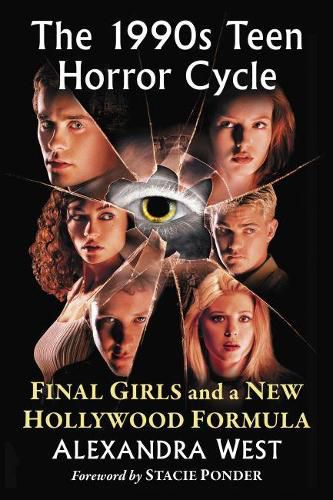Readings Newsletter
Become a Readings Member to make your shopping experience even easier.
Sign in or sign up for free!
You’re not far away from qualifying for FREE standard shipping within Australia
You’ve qualified for FREE standard shipping within Australia
The cart is loading…






This title is printed to order. This book may have been self-published. If so, we cannot guarantee the quality of the content. In the main most books will have gone through the editing process however some may not. We therefore suggest that you be aware of this before ordering this book. If in doubt check either the author or publisher’s details as we are unable to accept any returns unless they are faulty. Please contact us if you have any questions.
Horror films in the 1990s have routinely defied definition. Many critics and fans have referred to the 1990s as the decade that horror forgot with few notable entries in the genre. However, horror did exist in the 1990s and it went mainstream by targeting the fears and anxieties of teenagers. No longer were horror films made for the lowest budget, in the shortest period of time, dependent on genre fans to consume them, they were the focus of film industry, making careers and big office returns.
The films of this era are indebted to auteurs, studios, the young audiences who consumed them and the culture around them. Horror no longer existed in a vacuum, it was on the cover of magazines, in fashion ads and on well worn CD sound tracks. The rise of Third Wave feminism, and its more consumable Girl Power form, influenced these films as did the slow death of the American Dream marking them as a complex entry into teen culture that both embraced its commercial qualities and rejected them at the same time.
This book provides an in-depth study of the American youth market in the 1990s as well as the America’s history and politics, focusing on such films as Buffy the Vampire Slayer (1992), Scream (1996), I Know What You Did Last Summer (1997), Idle Hands (1999) and Cherry Falls (2000) among others. These films speak to the fears and anxieties of American youth during one of its most prosperous eras.
$9.00 standard shipping within Australia
FREE standard shipping within Australia for orders over $100.00
Express & International shipping calculated at checkout
This title is printed to order. This book may have been self-published. If so, we cannot guarantee the quality of the content. In the main most books will have gone through the editing process however some may not. We therefore suggest that you be aware of this before ordering this book. If in doubt check either the author or publisher’s details as we are unable to accept any returns unless they are faulty. Please contact us if you have any questions.
Horror films in the 1990s have routinely defied definition. Many critics and fans have referred to the 1990s as the decade that horror forgot with few notable entries in the genre. However, horror did exist in the 1990s and it went mainstream by targeting the fears and anxieties of teenagers. No longer were horror films made for the lowest budget, in the shortest period of time, dependent on genre fans to consume them, they were the focus of film industry, making careers and big office returns.
The films of this era are indebted to auteurs, studios, the young audiences who consumed them and the culture around them. Horror no longer existed in a vacuum, it was on the cover of magazines, in fashion ads and on well worn CD sound tracks. The rise of Third Wave feminism, and its more consumable Girl Power form, influenced these films as did the slow death of the American Dream marking them as a complex entry into teen culture that both embraced its commercial qualities and rejected them at the same time.
This book provides an in-depth study of the American youth market in the 1990s as well as the America’s history and politics, focusing on such films as Buffy the Vampire Slayer (1992), Scream (1996), I Know What You Did Last Summer (1997), Idle Hands (1999) and Cherry Falls (2000) among others. These films speak to the fears and anxieties of American youth during one of its most prosperous eras.